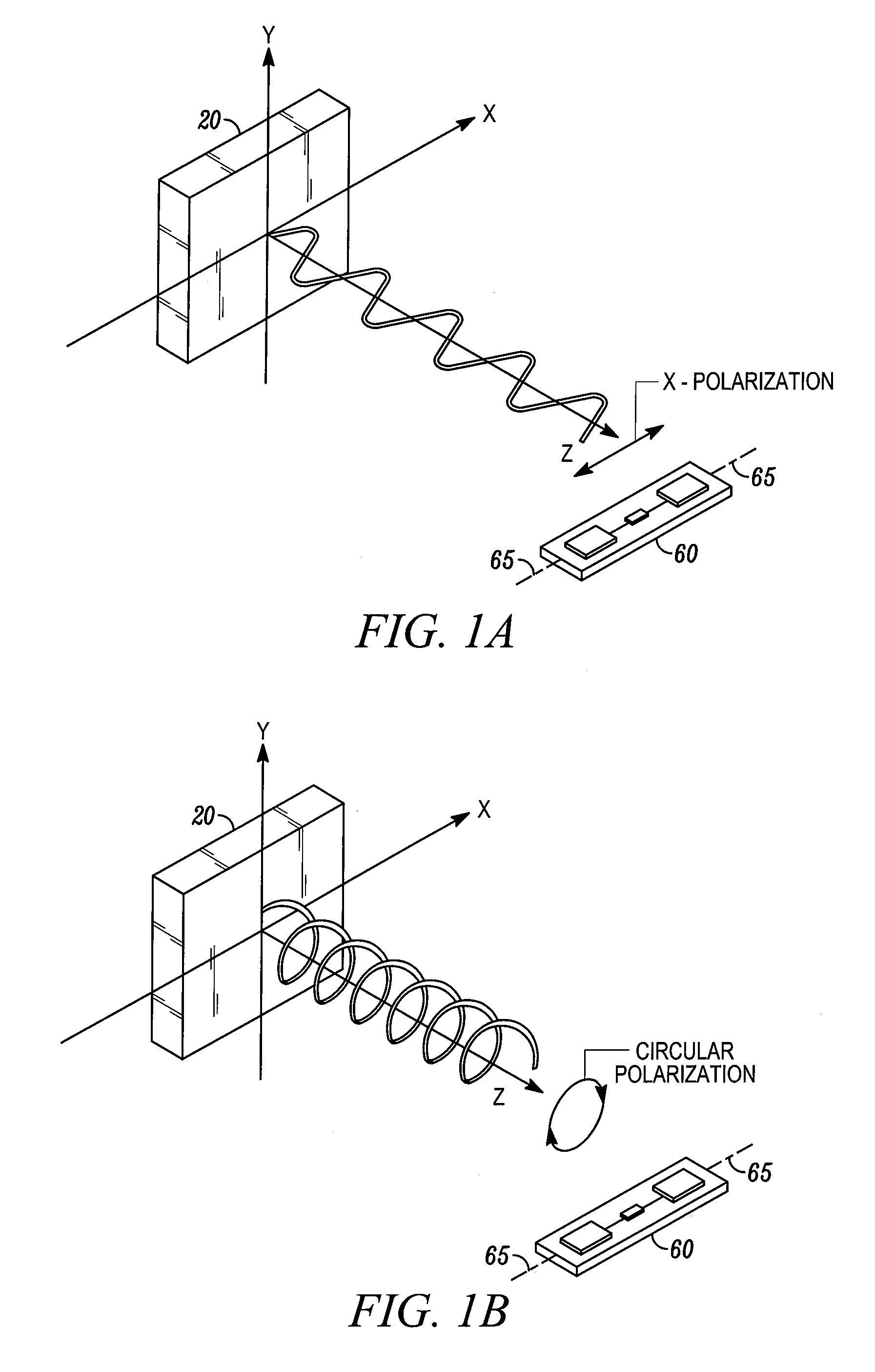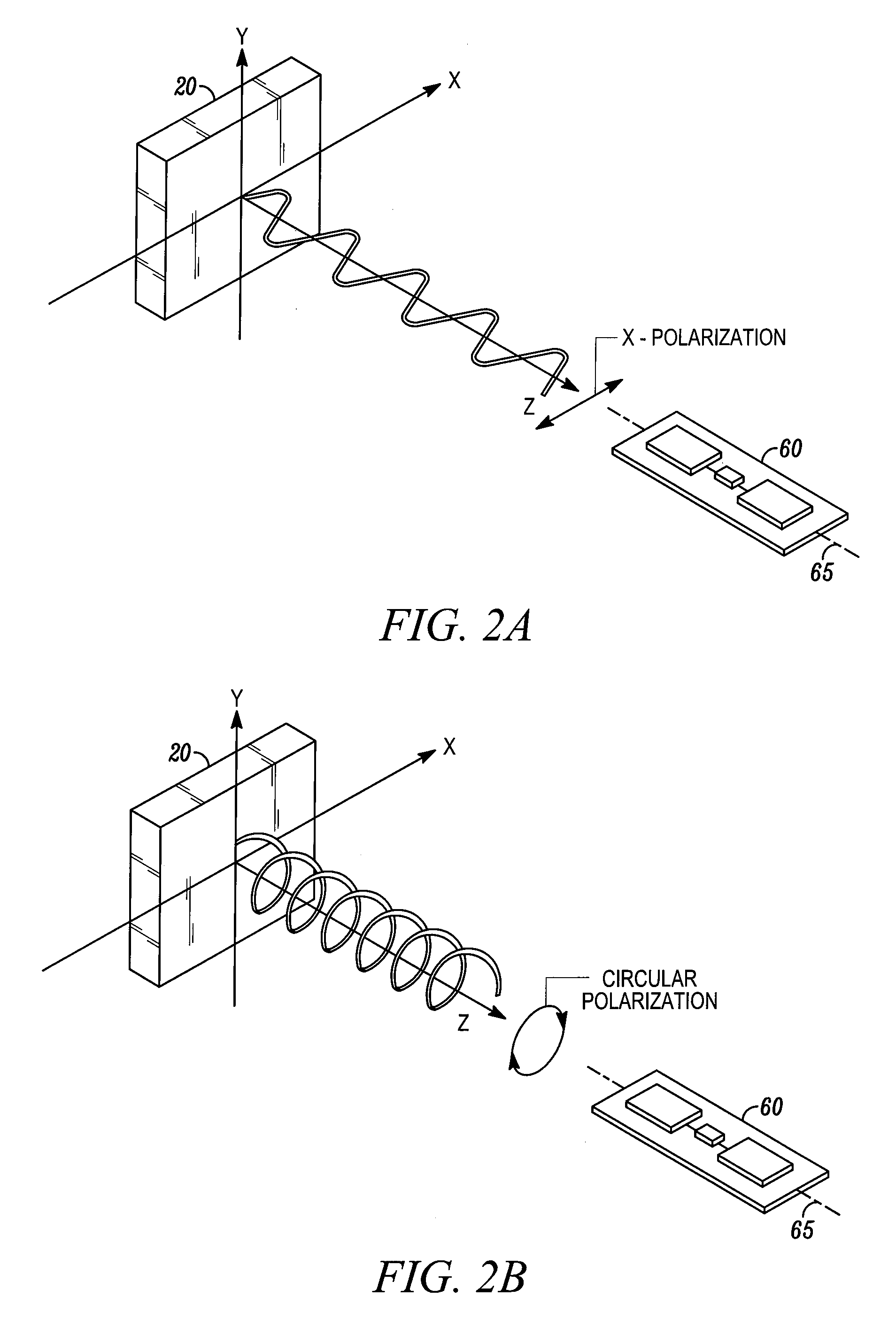Method and apparatus for improving RFID tag reading
a technology of rfid tags and readers, applied in repeater circuits, line-transmission details, instruments, etc., can solve problems such as difficulty in reading some rfid tags placed in front of rfid readers, and achieve the effect of improving the reading of rfid tags with rfid readers and being difficult to read
- Summary
- Abstract
- Description
- Claims
- Application Information
AI Technical Summary
Benefits of technology
Problems solved by technology
Method used
Image
Examples
Embodiment Construction
[0015]FIG. 3 shows a part of an RFID reader 20 in one specific kind of implementation. In FIG. 3, the RFID reader 20 includes an antenna 28 coupled to a transmitter 22 and a receiver 24. The RFID reader 20 also includes a circulator 23, a demodulator 26, and a frequency generator 21.
[0016]In operation, the transmitter 22 generates an RF interrogation signal. This RF interrogation signal is coupled to the antenna 28 through the circulator 23. The electromatic waves radiated from the antenna 28 are then received by the antenna in an RFID tag. In response to the interrogation from the RFID reader, the RF tag will reflect back some responding electromagnetic waves coded with the identification information of the RF tag. The responding electromatic waves are picked up by the antenna 28 as a responding RF signal. The responding RF signal enters the circulator 23 and is received by the receiver 24. The RF signal received by the receiver, after amplification, is demodulated with demodulator...
PUM
 Login to View More
Login to View More Abstract
Description
Claims
Application Information
 Login to View More
Login to View More - R&D
- Intellectual Property
- Life Sciences
- Materials
- Tech Scout
- Unparalleled Data Quality
- Higher Quality Content
- 60% Fewer Hallucinations
Browse by: Latest US Patents, China's latest patents, Technical Efficacy Thesaurus, Application Domain, Technology Topic, Popular Technical Reports.
© 2025 PatSnap. All rights reserved.Legal|Privacy policy|Modern Slavery Act Transparency Statement|Sitemap|About US| Contact US: help@patsnap.com



